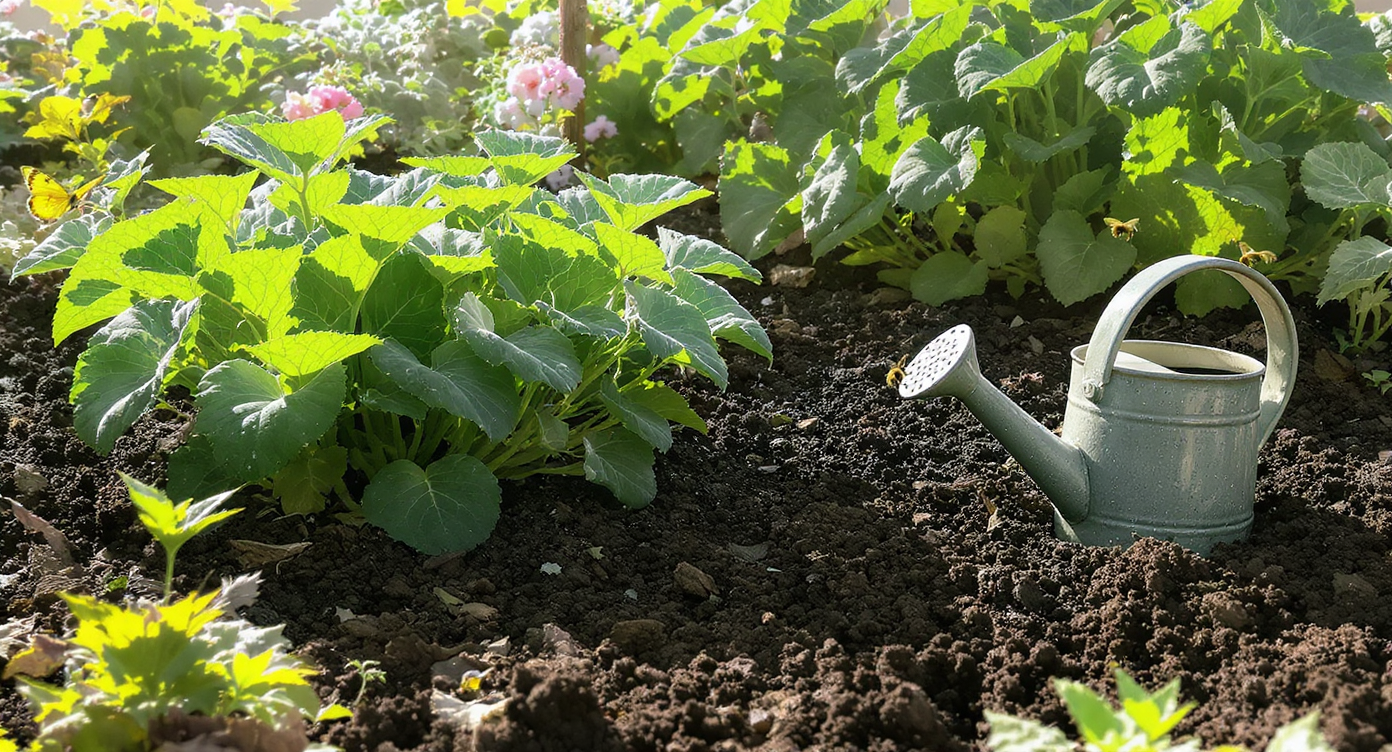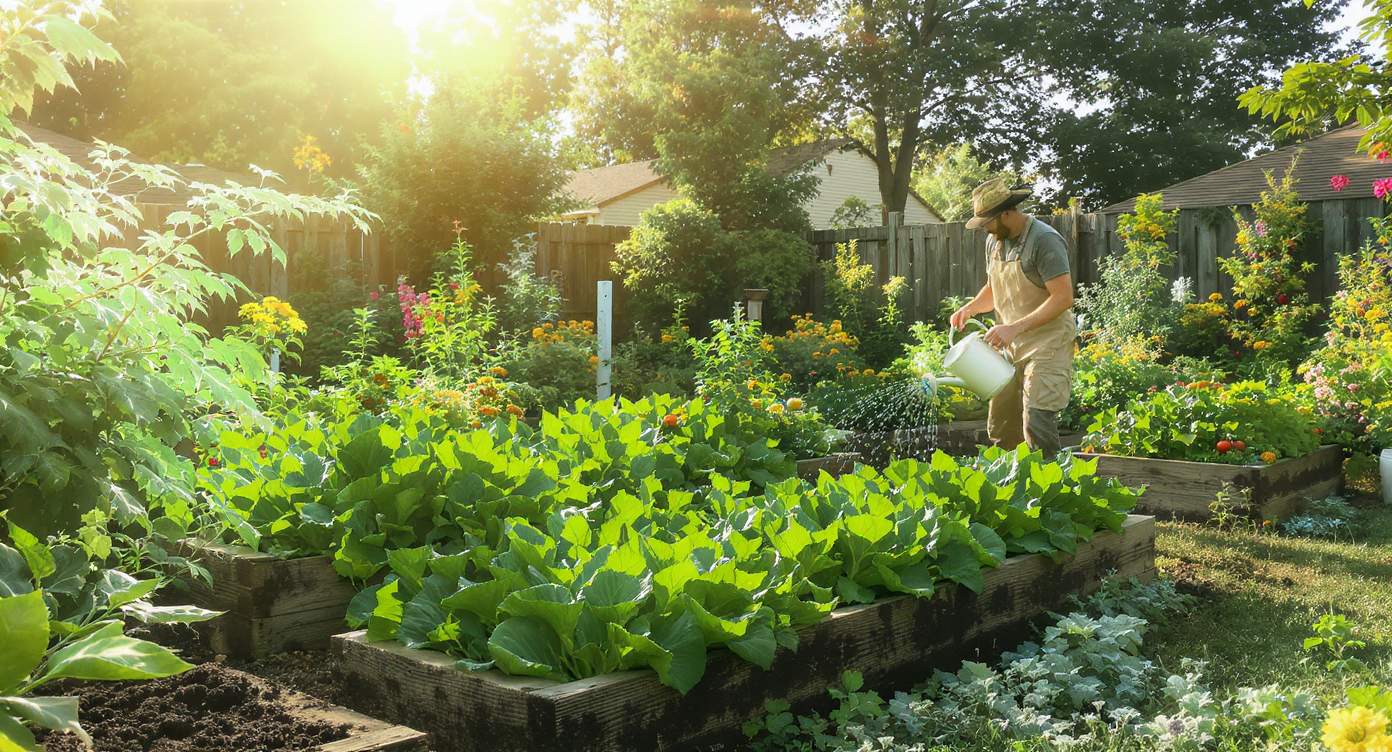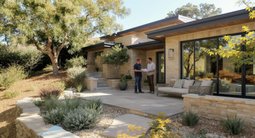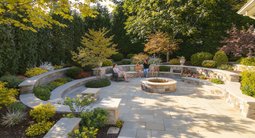TL;DR
Want faster progress in the vegetable garden? Focus on soil health, mulch deeply, plant by frost dates and soil temperature, and blend flowers with food crops for natural pest control. These field-tested vegetable gardening tips show exactly how to advance your game with a low-maintenance garden design.
Introduction

Healthy soil, sunlight, and pollinators form the foundation of successful vegetable gardens.
Most vegetables need 6–8 hours of direct sun, regular moisture, and living soil to deliver reliable yields. Step into any thriving backyard garden and you’ll find those basics, plus a grower who knows when to wait, when to water, and when to simply mulch and walk away.
Across regions, I keep hearing the same refrain from experienced vegetable gardeners: build soil, respect frost dates, invite pollinators, and keep the hose low and slow. In hot zones, shade cloth hums like a quiet insurance policy. In short-season climates, timing and variety choice do the heavy lifting. Consider this your set of defacto standards for a resilient, low-maintenance vegetable garden.
Theme Overview
Living soil, seasonal timing, and thoughtful plant mixes connect every smart vegetable garden idea here. From no-till beds to companion planting and drip irrigation, these tips prioritize soil health, water savings, and pollinator support while cutting down on weeds and fuss.
Here’s why that matters: healthy soil reduces fertilizer needs, mulch trims irrigation by 25–50 percent, and planting after last frost prevents the classic replant-and-regret cycle. We’ll tie it together with container-friendly options, raised bed versus in-ground guidance, and a few field notes from real yards.
Anecdote
A grower in the desert Southwest showed me cucumbers thriving under a single sheet of 40% shade cloth; without it, flowers dropped and yields stalled. In a rain-heavy coastal garden, woven fabric and drip kept foliage clean and the path mud-free, turning a high-weed plot into an easy daily harvest route.
Ideas, Tips, and Designs
01. Build Living Soil (no-till vegetable gardening)
Healthy soil biology turns locked-up nutrients into plant food, reducing fertilizer use over time. What it is: a no-till, compost-forward approach that feeds microbes, fungi, and worms so your plants tap a steady nutrient pipeline.
How it works: Disturb soil as little as possible, then layer 1–2 inches of finished compost each season to replenish organic matter. Horticulturists note mycorrhizal fungi extend root reach, which helps plants mine water and minerals during heat spells. In apartments, vermicomposting can supply castings rich in microbial life without odors. I’ve seen gardeners who stopped rototilling watch their beds hold moisture longer and resist compaction, while crops like tomatoes and peppers set deeper, more resilient roots.
- Start with a soil test; amend by need, not guesswork.
- Top-dress beds with 1–2 inches compost spring and fall.
- Consider worm bins for small spaces; harvest castings every 3 months.
Caption idea: A trowel slicing into dark, crumbly no-till soil flecked with compost. Alt text: Close-up of living garden soil with organic matter and visible earthworms.
02. Mulch Deeply to Save Water
A 2–4 inch organic mulch layer can cut evaporation by up to half and keep soils cooler by 5–10°F in summer. What it is: straw, leaves, or wood chips over the soil to regulate moisture, temperature, and weeds.
How it works: Mulch acts as soil armor, slowing raindrop impact and shielding microbial life from UV and heat. In windy, dry regions, thick straw around vegetables reduces crusting and saves irrigation cycles. Designers often suggest finer-textured straw for annual beds and leaf litter or wood chips in perennial zones. Leave a mulch-free ring around stems to prevent rot, and pull mulch aside for seeding rows so tiny seedlings aren’t smothered.
- Apply 2–3 inches around warm-season crops, 3–4 inches in arid climates.
- Use straw for vegetables, leaves or chips around perennials and paths.
- Refresh midseason if mulch compresses below 1 inch.
Caption idea: Golden straw tucked around tomatoes in raised beds. Alt text: Vegetable bed with 3-inch straw mulch surrounding tomato cages to conserve moisture.
03. Plant by Frost Dates and Soil Temperature
Transplant tomatoes when nighttime lows stay above 50°F and soil is consistently 60°F, and direct-sow peas in soil as cool as 40–45°F. What it is: scheduling starts and transplants around your local last frost date and soil temp, not the first warm afternoon.
How it works: Seeds and young roots respond to soil warmth, not air hype. Use your USDA zone for general guidance, then verify with a soil thermometer. Many growers harden off seedlings for 7–10 days before planting out to prevent shock. In mid-Atlantic and Northeast gardens, a “Mother’s Day” rule for frost-tender crops still proves wise, while cool crops slide in weeks earlier.
- Look up average last spring frost; add a one-week buffer for heat lovers.
- Harden off seedlings outdoors 1–2 hours on day one, adding time daily.
- Keep row cover handy for surprise late chills.
Caption idea: A soil thermometer showing 60°F in a vegetable bed. Alt text: Hand holding soil thermometer near tomato transplant to check planting readiness.
04. Companion Planting with Flower Buffets
Mixing herbs and flowers with vegetables boosts pollination and can interrupt pests through scent, diversity, and timing. What it is: interplant borage, nasturtiums, marigolds, dill, calendula, and zinnias among crops to create a balanced mini-ecosystem.
How it works: Pollinators prefer clusters, so group bloomers in repeating patches of three. Marigolds and basil near tomatoes can confuse pests, while dill and cilantro attract lacewings and parasitic wasps that hunt caterpillars. Borage is a bee magnet and pairs well with squash and cucumbers. In my rounds, beds with bright flower ribbons set heavier fruit, especially in small urban plots where every pollinator visit counts.
- Plant 3–5 flowering species with staggered bloom from spring to frost.
- Cluster flowers every 4–6 feet along vegetable rows or bed edges.
- Let a few herbs bolt for beneficial insects late season.
Caption idea: Tomatoes flanked by marigolds and basil. Alt text: Mixed vegetable bed with companion flowers attracting bees and butterflies.
05. Water Low and Slow, Prefer Drip
Most vegetables need about 1 inch of water per week, delivered at the soil line to reduce disease and waste. What it is: drip lines or soaker hoses under mulch, with optional 30–50% shade cloth during extreme heat.
How it works: Slow irrigation sinks to root depth, keeping foliage dry and mildew at bay. In hot, arid regions, subsurface drip run at midday can perk heat-wilted leaves without losing much to evaporation beneath mulch. Shade cloth over peppers, lettuces, and young transplants can cut leaf temps dramatically. Field note: in desert gardens, a simple 40% shade cloth panel over cucumbers often keeps flowers fertile when unshaded vines stall.
- Place drip emitters 6–12 inches apart in loams, tighter in sand.
- Mulch over lines to reduce UV wear and evaporation.
- Use 30–50% shade cloth when highs exceed 95°F for multiple days.
Caption idea: Mulched bed with a hidden drip line. Alt text: Close-up of soaker hose under straw delivering water at the root zone.
06. Propagate and Start Smart
Tomato suckers can root in 10–14 days in water, becoming free backup plants for succession or storm losses. What it is: low-cost propagation and organized seed starting that multiplies plants without multiplying effort.
How it works: Take 4–6 inch healthy cuttings, remove lower leaves, and root in water or a sterile mix, then pot up. For seeds, soil blocks or reused containers with drainage work as well as fancy trays. Label everything, and group cool-season and warm-season starts to simplify light height and temperatures. I’ve watched thrifty growers start an entire tomato row from pruned suckers, matching the vigor of store-bought transplants by midsummer.
- Use clean shears; change water every 2–3 days when rooting.
- Keep seedlings 2–3 inches below LED lights to prevent leggy growth.
- Organize seed packets by season and sowing date to cut mistakes.
Caption idea: Tomato cutting rooting in a jar on a windowsill. Alt text: Glass jar with tomato stem showing white roots ready for potting.
07. Right Plant, Right Place, Right Bed
Place full-sun crops where they receive 6–10 hours of light and site thirsty plants closest to water for fewer skipped irrigations. What it is: choosing varieties and bed types to fit your microclimate and lifestyle.
How it works: South-facing walls create heat pockets for peppers and melons, while low, wetter spots suit willow-yielding or rain garden edges, not tomatoes. Raised beds warm fast and drain well in cool or wet regions, but in hot-dry climates, in-ground beds often hold moisture better. Designers recommend spacing tomatoes 18–24 inches, peppers 12–18, and cucumbers 12 inches along trellis lines to balance airflow and yield.
- Map sun for a day; note 2-hour blocks to find 6–8 hour zones.
- Use raised beds in cold/wet zones; plant in-ground where summers are 100°F+.
- Group crops by water need to simplify irrigation.
Caption idea: Sketch of a small yard showing sun arcs and planting zones. Alt text: Diagram marking full sun, part sun, and high-water areas for vegetable placement.
08. Weed Less with Ground Covers and Smart Fabric
Woven landscape fabric with X-cut openings can reduce weeding to minutes per week in high-pressure areas. What it is: a breathable, UV-stable barrier for rows of long-season crops, paired with wood chips on paths.
How it works: Woven, not plastic sheeting, lets water pass and encourages worms to work beneath. Cut 6–8 inch X’s where transplants go and cover edges with mulch to protect from heat. In rain-heavy climates, fabric keeps soil from splashing disease onto lower leaves. Field note: on a tropical mountainside where weed seed banks are endless, fabric plus drip turned a struggling bed into effortless collards and okra.
- Use woven polypropylene rated UV-stable; avoid solid plastic film in beds.
- Cut snug X’s, then mulch on top to hide and anchor fabric.
- Pull fabric between rotations to add compost and reset spacing.
Caption idea: Long vegetable row with fabric and neat X openings. Alt text: Woven landscape fabric with planted peppers and wood-chip paths for low-maintenance weeding.
Transitional Reflection
The beauty of modern vegetable gardening isn’t rigidity, it’s rhythm. You feed the soil, welcome diversity, time your moves to weather and light, then take a slow daily walk to spot hornworms before they strip a stem or to catch the first blush on a tomato.
I’ve watched Arizona growers stretch seasons with shade cloth and Pennsylvania gardeners map their year by holidays. Different paths, same result: calm, abundant harvests rooted in patient, repeatable habits.
How to Visualize It
Previewing a garden layout saves seasons of trial and error by revealing sun patterns, pathways, and bed spacing before you dig. Before you plant a single seed, map your space virtually: ReimagineHome can mock up raised beds, drip zones, shade-cloth frames, and companion flower ribbons so you can see how your low-maintenance garden design will actually look and flow.
Visualization Scenario
Upload a phone photo of your yard into ReimagineHome, sketch two 4x8 raised beds, drag in a drip grid, and overlay a 40% shade cloth panel on one half. Add marigold and borage ribbons along the edges. Toggle sun path to confirm your tomatoes really get 8 hours, then export the layout for weekend marking and measuring.
FAQ
How do you design a low-maintenance vegetable garden?
Use no-till beds, 2–4 inches of mulch, and drip irrigation grouped by water needs. Companion planting and woven fabric in weedy zones reduce upkeep further.
What are the best drought-tolerant vegetables for hot summers?
Okra, cowpeas, sweet potatoes, eggplant, and chiltepin-type peppers handle heat well. Pair with mulch and 30–40% shade cloth during extreme heat for stability.
When should I start seeds indoors for spring planting?
Count back from your last frost date by each crop’s lead time: peppers 8–10 weeks, tomatoes 6–8, brassicas 4–6. Harden off seedlings for 7–10 days.
How much sun do vegetables need?
Most fruiting crops need 6–8 hours of direct sun, while leafy greens can manage with 4–6. Track sun in two-hour blocks to place beds accurately.
Is raised bed gardening better than in-ground?
Raised beds warm quickly and drain fast, ideal for cool or wet climates. In hot-dry regions, in-ground beds often conserve moisture better and reduce watering.
What’s an easy way to improve soil if I rent or have a patio?
Use containers with high-quality mix amended with 10–20% compost or worm castings. Top-dress monthly with compost and keep pots mulched 1 inch deep.
Closing Reflection
Great vegetable gardens aren’t lucky, they’re layered: living soil below, mulch on top, a web of flowers and beneficials buzzing through the middle. When you water at the roots, plant by the thermometer, and choose the right bed for your climate, the work shifts from crisis to care. Start with one change, maybe deeper mulch or a stricter frost-date rule, then add the next. Harvests follow the habits. And if you need a nudge to picture it, sketch it digitally with ReimagineHome and step into the season with confidence.
.svg)

.svg)










.png)